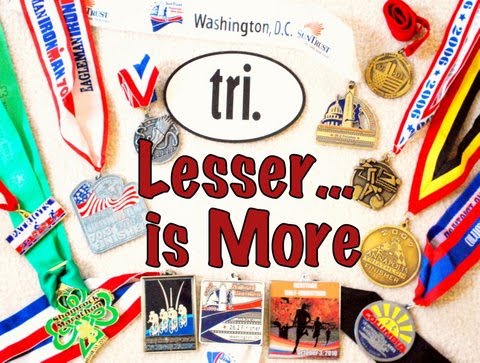Get faster now, so you can go long (and be faster) in the Fall.
Let’s take a look at why this approach makes more sense than
just mindlessly logging long run after long run for the next 5+ months. Ever wonder why elite marathoners don’t
typically race multiple marathons throughout the year? Well for one, they realize that optimal
performance can really only be dedicated to 1 marathon per season or year. But the other reason is because they aren’t
in marathon shape year round – they’re focused on training at shorter distances
to get faster. It’s easy to understand
why. Let’s stick with elites as the
example for the moment. If you want to
be an elite male marathoner, you need to be capable of running sub-2:10 (sub-2:05 for
world class) these days. Many of these same runners run 59:XX or faster for the half marathon too. So to run a faster marathon, you have to be able to run a faster half marathon, because the faster times at those shorter distances translate into faster times when those same athletes go back to marathon training. If you’re
slower than that, no amount of training more at marathon pace is
going to get you faster. The training doesn't work like that.
Simply put in terms regular runners can understand, if your
goal marathon pace is an 8:00/mi pace, but your half marathon pace is 7:45/mi
pace, the best thing you could do would be to knock that 7:45/mi half marathon
pace down to 7:30 or 7:15. Why? Because if you can run a half marathon (just
a bit slower than lactate threshold) at 7:15-7:30/mi, that 8:00/mi goal pace
will equal a much lower percentage of effort to hit. As a result, it will cost you less (in terms
of the energy you’ll use) to run at that goal pace, therefore allowing you to
run farther at that pace without hitting the dreaded wall. And if you are properly trained, taking in
nutrition, and executing with proper pacing, there hopefully won’t be a wall at
all come race day.
Let me just interupt this message to remind you that you can't just start training at whatever pace you want. You still have to train at your current fitness levels, no matter the distance. So to get your half marathon times faster, you can't just train at those faster paces. You have to train at your current fitness first.
But don’t let the example of the half marathon fool you into
thinking that’s the only option. Every
distance all the way down can play a supporting role, which is why you often
see many of these same elites racing shorter distances. In some cases, it’s just a workout as part of
a larger training cycle, but in others, it is because they are training to get
faster at shorter distances so they can ultimately get faster at the longer
stuff.
And aside from the explanation above, there are many other
benefits for the everyday runner. Here
are just a few:
·
Running faster encourages better running
form: Spending more time running fast
versus just slogging out the miles means you’re less likely to get
overuse/repetitive stress injuries that are common with endless long runs
·
Changing the stress stimulates new progress: If
your body has been training one way for a while (ie lots of long, easy,
moderate runs), jumpstarting it with some faster running can recruit additional
muscle fibers to support your running.
These fibers can then be trained to act like slow twitch fibers when you
turn back toward the distance stuff, which will help prevent fatigue late in
the race.
·
Faster running adds a strength element: While
hills tend to be a natural component of most runner’s training, faster running
forces your muscles to work harder in different ways, meaning you’ll get
stronger. A stronger runner is able to
maintain proper running form longer, which means you’ll likely slow down less
late in races.
·
Find a new definition of hurt: There is a huge
difference between the type of pain experienced in long distance races versus
the type of pain experienced in a 5k.
Long distance races are like someone flicking you a million times,
eventually leading you to get annoyed and feel some pain. 5k pain is a lung busting, muscle burning
feeling that takes some getting used to.
Teaching your mind to be able to handle a variety of pain will help you
when things get tough, no matter the distance.
In summary – you can always train your body to run longer,
but it is much more difficult to train it to run faster AND longer at the same
time. So the benefit of spending the
time you have now to get faster, is that you don’t have to add another foreign
stress to your body when it comes time to stack the miles up in preparation for
your goal marathon in the Fall. Add the fast now, so you can focus on the far (with some moderate fast) later. So do
the smart thing, and find some speed over the next month or so, get faster, and
use it to prep for your goal Fall race.
